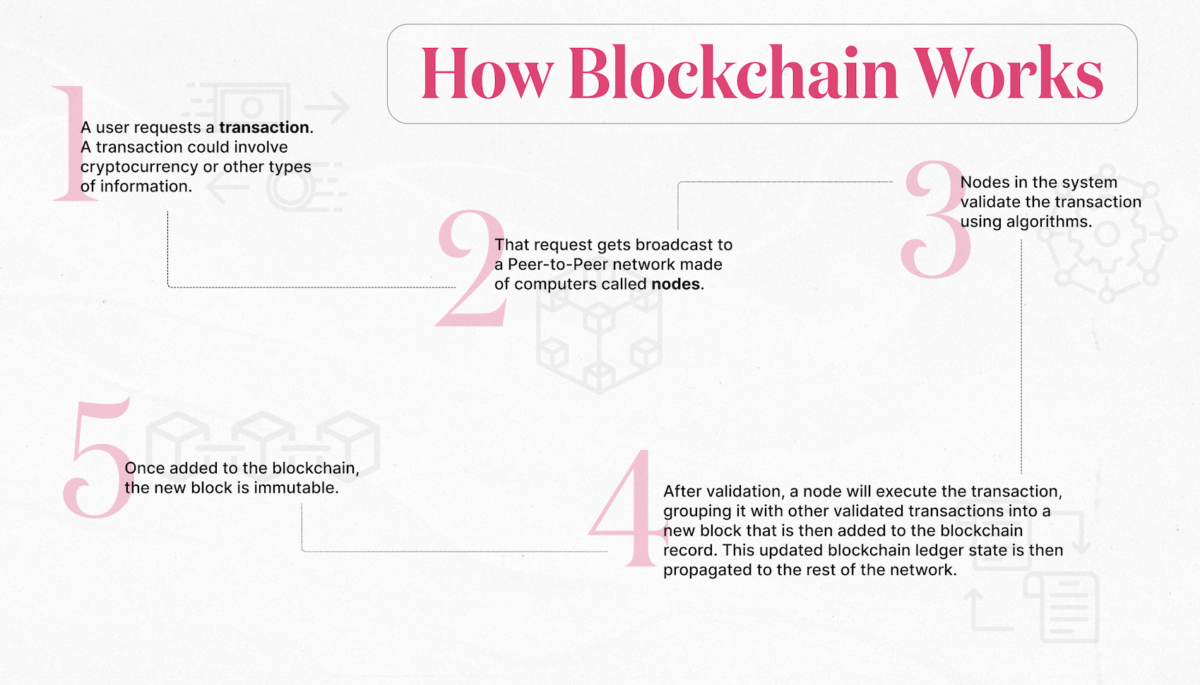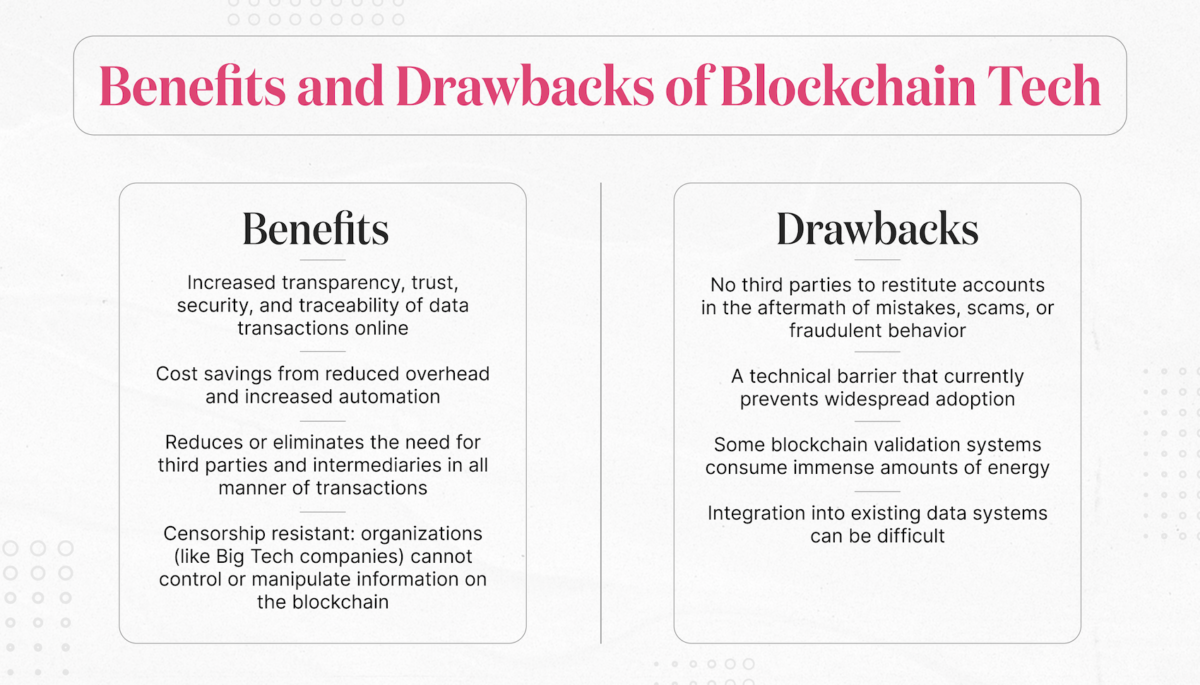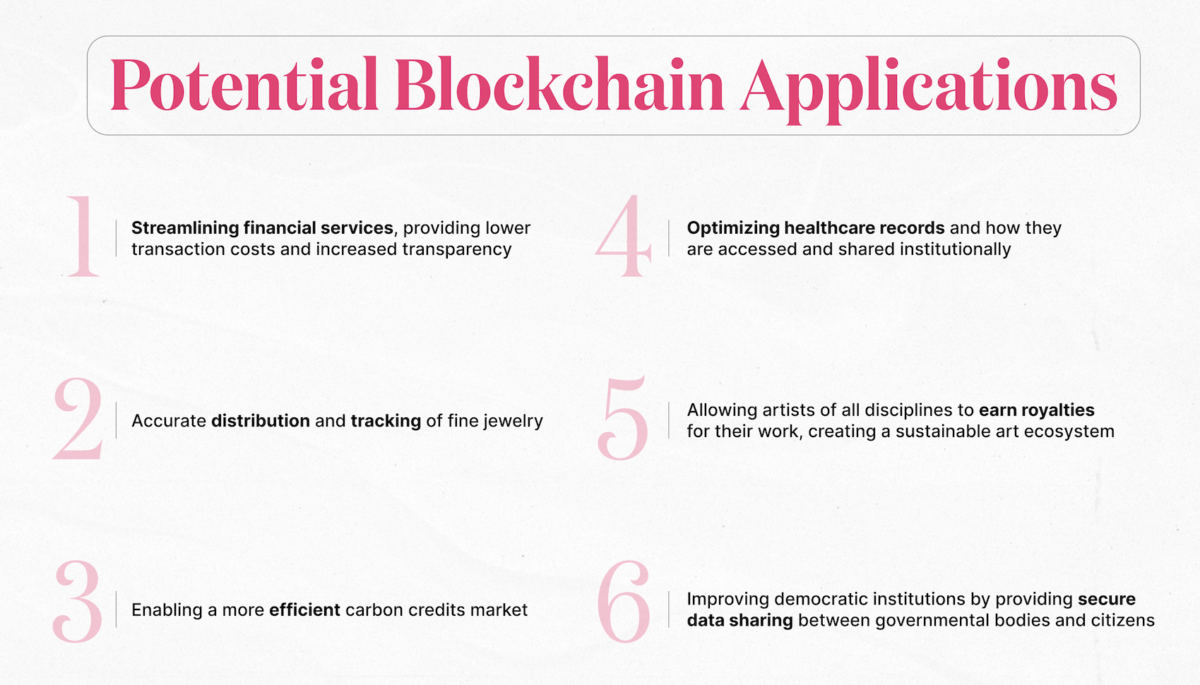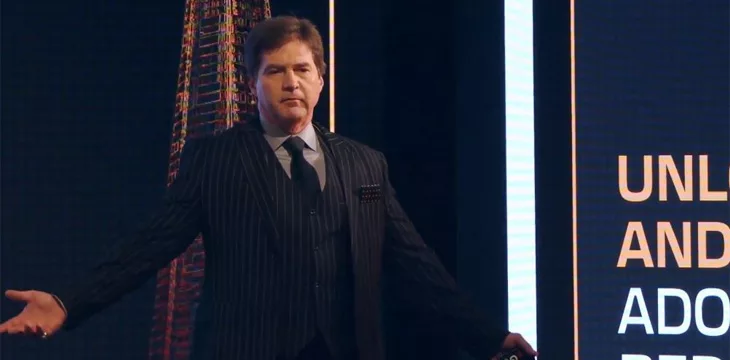Blockchain 101: All the basics explained
Web3 can be a confusing place. If you’re new, words like “blockchain,” “NFT,” and “smart contract” are opaque terms that do more to stifle curiosity than invite it. This skepticism shows in the data: globally, only 1 in 10 working-age internet users owns some form of cryptocurrency, the digital tokens needed to engage in much of the Web3 ecosystem.
This is ironic, since Web3 is the latest version of the Internet, based on ideas of accessibility and fairness. Don’t let the critics fool you; the stereotype that crypto and NFTs belong to an exclusive and unwelcome “crypto bro” niche is just that – a caricatured generalization. These tools are worth the learning curve no matter who you are (or how old you are) because they are made with everyone in mind. And, just as importantly, they are rapidly changing how the world works. While the blockchain – the technology that underpins everything that goes into the Web3 – is indeed complex, the concepts it’s built on are actually quite simple to understand. So let’s dive in.
What is blockchain?
The blockchain is a distributed digital database that stores, moves and tracks information globally without sacrificing transparency. This data is contained in “blocks” that are linked together to form a chain-like record of information flow. Think of the blockchain as a type of internet infrastructure. Just as the internet enables programs like Gmail, Spotify or PayPal to exist, the blockchain also allows apps and programs to run, albeit in a unique way.
There are several blockchains that form their own ecosystems on the web. Ethereum, Solana, Tezos, Flow and Polygon are all separate blockchains. Blockchains are often referred to as a public ledger because their data transactions are available for anyone to see; no single institution or organization acts as a gatekeeper to the information they contain.

This is one reason why blockchain technology is so appealing to so many. Its openness and transparency stand in stark contrast to Web2 databases and systems operated by Big Tech entities such as Apple, Google and Microsoft, which control access to and can even manipulate users’ data as they please behind closed doors. The decentralized nature of the blockchain produces an immutable and transparent record of data flow.
Fine, but what makes the blockchain so democratic?
Blockchain systems are managed by a network of users. Instead of relying on a single centralized source, like Amazon’s data centers, for example, Web3 is powered by a distributed network of devices (known as nodes) running a particular blockchain’s software (like Ethereum) around the world.
Data transaction records (such as those for a cryptocurrency or NFT transaction) are stored in blocks that are linked together to form an accounting chain. Transaction requests are either validated or rejected by majority consensus in the network. For a block and the transactions it contains to be officially and irrevocably added to the global ledger, the majority of computers (nodes) in the network must agree on the transaction’s validity. This aspect of the blockchain is what makes it so secure and decentralized – no individual or group can change or hide the information on it.
But what if someone hacks these nodes?
The core principle is that users in the system – not third parties such as banks or technology companies – validate proposed transactions in that system. If I want to send X amount of cryptocurrency to a friend on the blockchain, users in the system operating a validating node retrieve my request, validate its authenticity, and the transaction is approved by the network as a collective.

Even if hackers gain control of a node to attempt a forged transaction (and steal someone’s valuable digital assets in the process), it will not be recognized by other nodes in the system. In Ethereum’s case, hundreds of thousands of individuals and organizations running software around the world act as the blockchain’s validators. To falsify a transaction on the blockchain, hackers would have to take control of half of these nodes – a near impossibility. Because of this, the more users running nodes in a system, the safer the blockchain is from being hacked.
Okay, so how does blockchain technology work, exactly?
So now we know that blocks of data are linked together to form a chain of transparent and distributed record keeping in this system. The next thing to know is that these blocks contain a few things.
The first is what is called a cryptographic hash of the previous block. If that term scares you a little, you’re not alone, but don’t let it scare you. Cryptography is simply the study of secure communication techniques that allow only a sender and receiver to understand the content. And a hash is simply a way to compress data. A cryptographic hash then combines the security features of cryptography with the messaging capabilities of a hash.
A block contains the cryptographic hash of the previous block to ensure that it has not been tampered with. And a block will also include a timestamp that dates the transactions in it and the data of those transactions.
I’ve Heard About Smart Contracts – What Are They?
A Web3 staple, smart contracts are programs on the blockchain that run when certain conditions are met. Typically, these are used to automate the execution of an agreement without the need for a third party, as they are coded with instructions that only trigger under the right circumstances.
A well-known smart contract is Ethereum’s ERC-721, a data standard used to create NFTs.
It all sounds good, but why use blockchain at all?
While blockchain technology is primarily used to enable transactions related to cryptocurrencies and NFTs, it is only the underlying infrastructure for these functions. As such, that infrastructure can be used in potentially unlimited ways. The internet as we know it today allows applications and websites to work, but the internet itself is not limited to a particular app or service. Similarly, organizations around the world are exploring ways to use blockchain technology to improve and innovate in supply chain storage, data storage, payment processing, digital identification, carbon credit tracking, royalty distribution, healthcare and many other industries and applications.

Despite Web3’s difficult 2022, the technology underpinning the next version of the internet is simply too valuable and exciting to turn down. As more institutions begin to experiment with blockchain technology, expect big and small changes in industries across the board. Web3 is still in its early days, and that’s all the more reason to learn about the technology before it finds widespread use.


